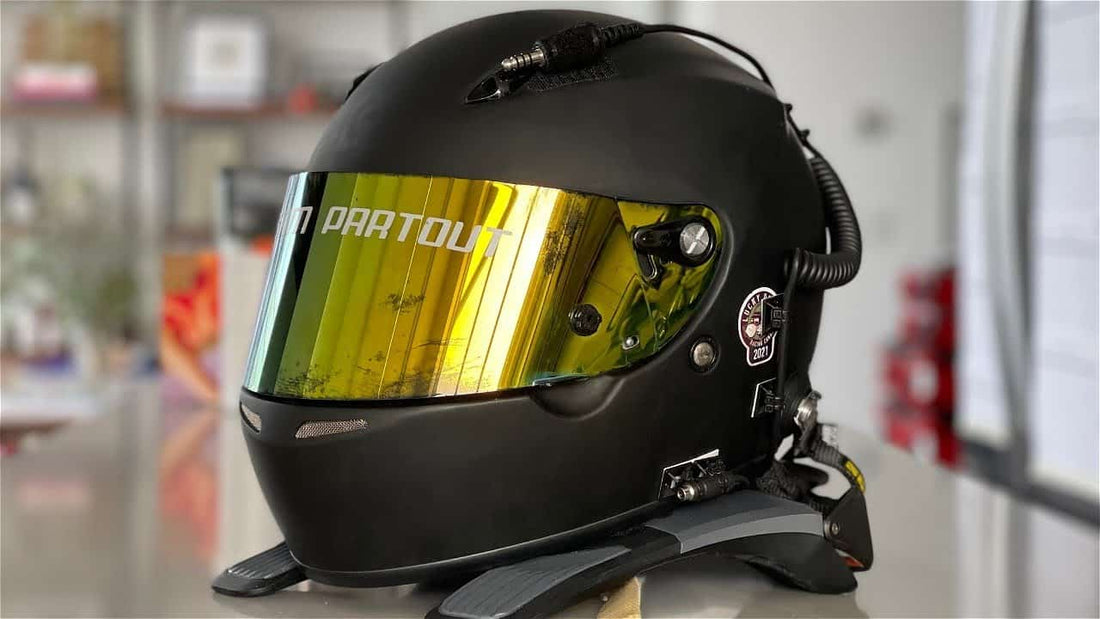
Choosing the Right Helmet for HPDE/Track Days: A Comprehensive Guide
Jason LiuShare
Participating in High-Performance Driver Education (HPDE) or track days requires a lot of preparation, and one of the most crucial aspects to consider is your safety equipment. Topping the list of necessary gear is a suitable helmet. This guide will delve deep into how to select the right helmet for your HPDE or track day experiences.
Before diving into this helmet guide, be sure to check out our guide on your first track day experience.
Check out my full video guide on how to select your first HPDE helmet.
Why Helmet Selection Matters
When entering grassroots motorsports, helmet choice is paramount. A helmet isn’t just a piece of gear; it’s your primary protection against potential head injuries during an on-track incident. For newcomers, understanding what makes a helmet suitable is essential, and this guide is based on the experience of someone who started just like you.
Spotting A Red Flag
An initial tip for new drivers is straightforward: if the event you’re considering doesn’t have a helmet requirement, it might not prioritize safety. You would do well to avoid such events.
Starting with an Example: The HJC AR-102
Introduced in 2015, the HJC AR-10II has been a solid choice for many beginners. It’s affordable, well-constructed, and lightweight. Moreover, while there are many helmets out there, the AR-10II’s tenure and consistent performance make it a suitable example to use for this discussion.
Fit & Comfort: Prioritize Above All Else
While designs might be tempting, it’s the fit and comfort that you should prioritize. Helmets are designed based on different head shapes. This means you might like a particular design, but it might not be the most comfortable fit for you. Remember, an uncomfortable helmet during a long track session can be distracting and may compromise safety.
Understand Accreditation & Expiration
An accredited helmet ensures it meets specific safety standards. Accrediting bodies, like the Snell SA standard, offer ratings that you can find on the inside of the helmet. It’s also essential to check the helmet’s expiration date. Most helmets follow a 10-year eligibility cycle, starting from their accreditation year and not the year of manufacturing.
Currently a helmet with an SA2015 rating is the minimum required by many racing and track day organizations.
Consider Material & Construction
While a helmet’s outer appearance is vital, the inner construction, including the padding and cushioning material, is equally crucial. All accredited helmets will be equipped with Nomex lining as a standard feature. Being able to remove and wash some of the helmet’s padding is also a plus, as you’d undoubtedly sweat during track activities.
Weigh in on Material Choices
Composite and carbon are the two primary materials for helmets. Though carbon helmets are seen as “premium,” the actual weight difference between a composite and carbon helmet of the same model is often negligible. Choosing carbon may be more about aesthetics than performance.
Accessories: More Than Just Looks
Your helmet can be equipped with a range of accessories. Visors, for example, are popular. While iridium or reflective visors look cool, ensure they don’t compromise your visibility on the track. Also, if you use a head and neck restraint system, ensure your helmet can accommodate it. All helmets with SA2015 or newer will have preinstalled Hans anchors.
Wrapping up
Your helmet is more than just a piece of gear; it’s a statement of your commitment to safety. As you embark on your HPDE or track day journey, ensure that you’re armed with the knowledge to choose the right helmet. Remember, a well-fitted, accredited, and comfortable helmet can make all the difference during those intense track moments. Safe driving!
